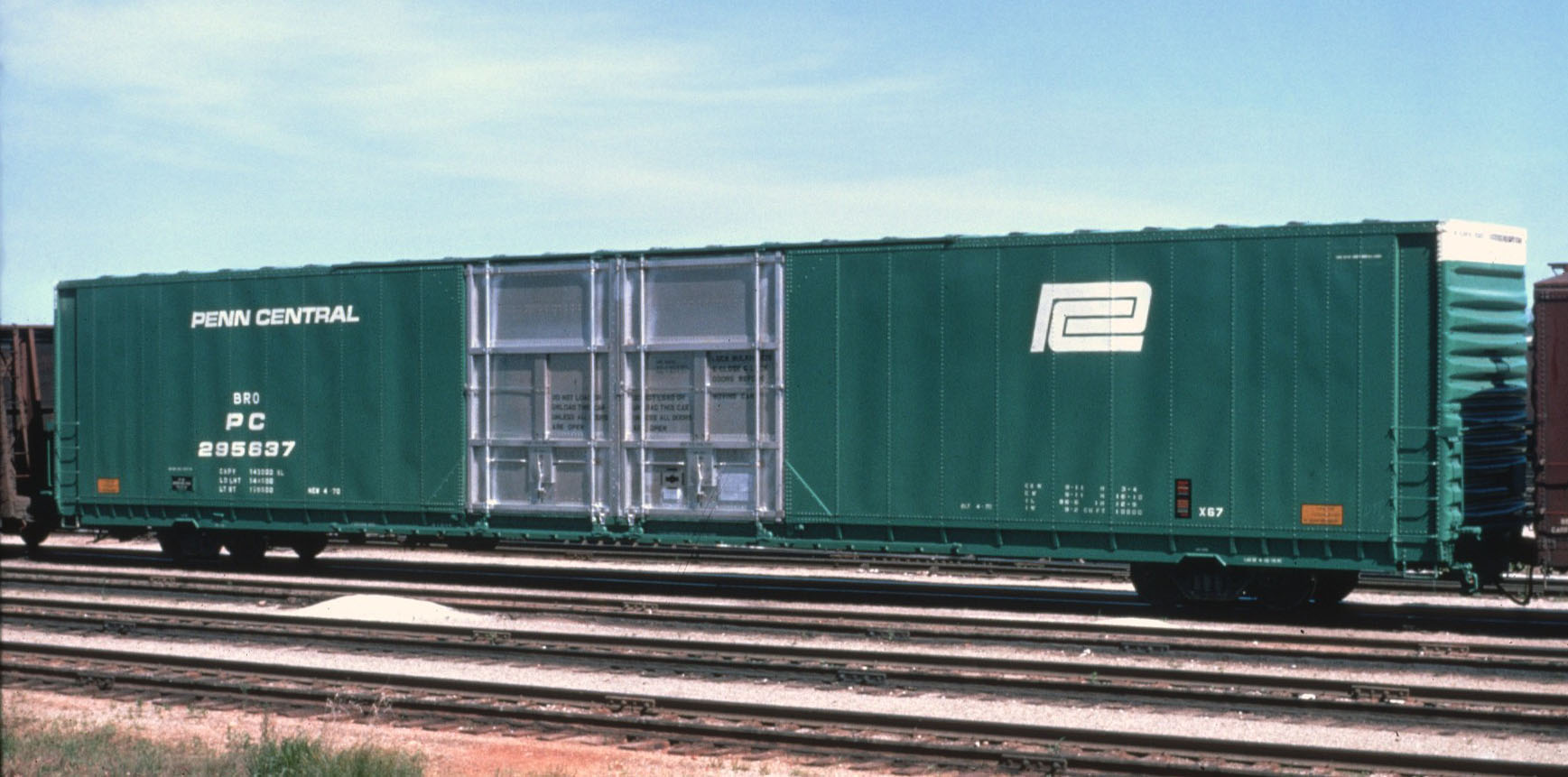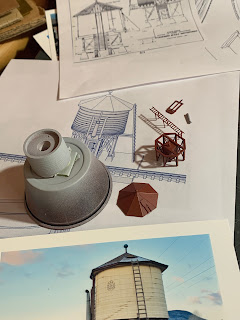After moving, and all the chaos and chores associated, it's been a little hard to re-establish the routine of working on T scale. I finally got my work area organized along with the addition of a few new tools and organizational improvements. A giant cutting mat from Fiskars is a really nice addition. A new airbrush was acquired, a Badger 105, aka "the Patriot". It supplants the old cheap Chinese Iwata knock-off, and a very nice deal from Midwest Model Railroad Supply gets you the airbrush plus a set of Badger acrylic RR colors and an undec HO car to practice on for less than $100. In my case it was an HO Athearn Genesis 60' boxcar. I have been contemplating an HO micro-layout to balance out the T-scale stuff, so maybe this will get me started.. The really nice thing is I have more storage space and much better organization (thank you Ikea) in the new workshop. To cut to the chase, I am back to working on my T-scale models!
The first order of business has been getting the prototype of the 89' autorack done. The etch for the side/roof wrap finally arrived along with many N-scale signal bridges and a new 12-foot plug door for the 50' Plate F boxcar. The autorack wrap worked out essentially perfect! It comes in three pieces-- a roof and two sides. It was assembled by first placing the unfolded etch of the roof face-down on the workbench, then gluing the top section of the roof in place being very careful to center it properly. Once the glue on the top section was dry, each side was carefully folded onto the angled side of the roof by bending the body sideways. The sides were then glued in place.
The body is hollow, so I added a bit of weight and assembled the frame/trucks. Note, since the body is hollow it has potential to be a powered car. For painting, I gave it a shot of primer from the rattle can (Tamiya Fine Primer), then masked the ends and frame and gave it a shot of Tamiya Bare Metal Silver (again rattle can) to see how it looks. The overall impression is exactly what I hoped for!
I'm now working on decal sets, which will include decals for the side posts--too small to hand-paint in my opinion. So far, I have a Santa Fe, Conrail, and Chessie set on the way--feel free to let me know any suggested roads.
I also prototyped the 12' etched plug door on the 50' Plate F boxcar. This is assembled on the 3D printed body (designed for the door) by gluing in place, then adding 9.5mm segments of 0.15mm rod for the pivot rods. Here's the body shot with oxide red primer. The detailing much smoother than the plain 3D printed doors. I think this one will get a BN scheme..
Anyway, that's the update for now, so until next time happy modeling!




























